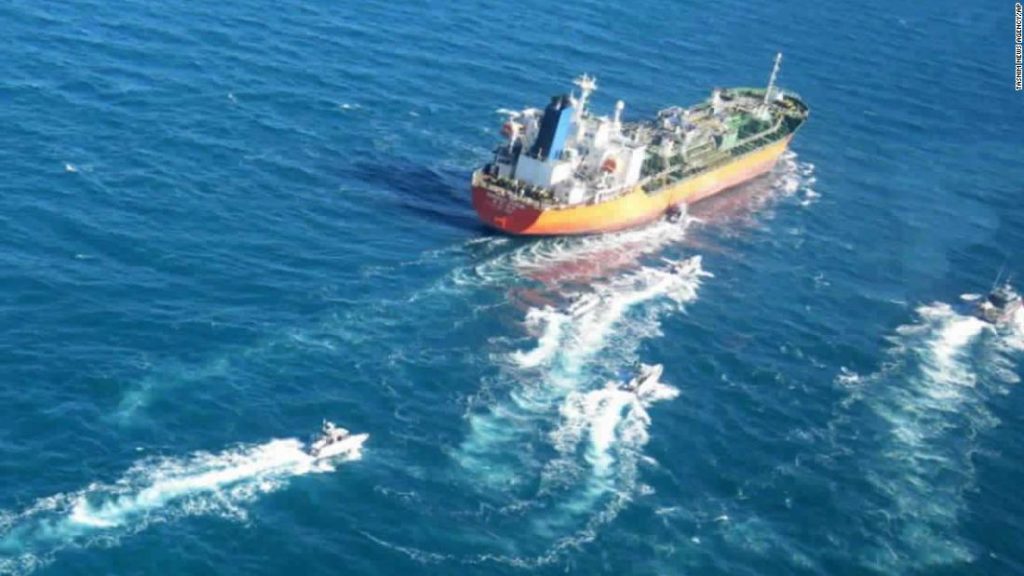
But it is not a complete surprise: Iran’s Majlis, or parliament, outlined such a move in December as part of a timetable of steps it wanted President Hassan Rouhani to take in a bid to escalate pressure on US President-elect Joe Biden’s administration for sanctions relief.
While uranium enriched at 20% is immediately useless if you want to make a weapon, it is a lot closer to the desired threshold of 90% — months away, at a push. It is a sign of potential potency that Israel’s Prime Minister Benjamin Netanyahu immediately seized upon to suggest that Iran seeks the Bomb. The timing of the move — in the face of Rouhani’s general rejection of the aggressive Majlis proposals — was quicker than many expected, but you would have to feign shock that it happened.
Inspectors from the UN’s International Atomic Energy Agency will now assess how significant the enrichment at the Fordow facility has been.
South Korea is a relatively neutral victim — with some Iranian assets held still in their accounts, allies enough to be noticed, but none who would act over this event alone.
The anniversary of Soleimani’s death was heralded with impressive CGI videos on Twitter, suggesting the revenge Iran’s allies could take, if they were indeed animated eagles, swooping down on video-game US soldiers. Yet nothing happened here either, with Iran’s allied militia in Iraq very clearly choosing not to repeat their earlier attacks on the US Embassy in Baghdad.
The mutual posturing — if hopefully that is all it remains — is almost transparently geared towards re-igniting negotiations with the incoming Biden administration.
Jake Sullivan, President-elect Biden’s national security advisor designate, told CNN the US would re-enter the JCPOA if Iran also did — if Iran dismantled centrifuges, and stopped enrichment. (It is unclear who would do what first, or whether the vast number of ancillary sanctions put on Iran by the Trump administration would still cause so much damage to the Iranian economy that the JCPOA alleviation of sanctions would become less beneficial).
Sullivan said once both sides were back in the JCPOA — which would be a huge feat of synchronicity and speed, given the Iranian presidential elections later this year in which hardliners are well-placed — then a “follow-on” deal was possible over Iran’s ballistic missile technology. Iran has flatly rejected any such deal, and said there’s nothing to renegotiate over the JCPOA: it is those original terms or nothing.
The churn and swill left behind by Trump’s maximum pressure policy has muddied waters enough that Sullivan and Biden will face an uphill challenge. But Tehran’s mostly rhetorical response to intense sanctions, repeated assassinations and a fair deal of US inflammatory rhetoric, does suggest it is keen for diplomacy and, with it, sanctions relief. Foreign minister Javid Zarif tweeted that while 20% enrichment had begun, it was in line with the JCPOA and “fully reversible upon FULL compliance by ALL.”
And the Trump experience — chaotic and counter-productive as it has been — afforded perhaps one lesson: that Iran, faced with a high-profile killing that many thought would spark a conflagration, knew it would lose any wider conflict with the US, and opted to not respond by publicly racing for a nuclear weapon. They’ve shown a pretty clear grasp of where Trump’s red lines are.
The lesson is two-fold. Iran is weaker than its angry, vengeful rhetoric suggests. But it follows that it is also not the rampaging, imminent threat its most hawkish adversaries would contend.
The challenge of the next 16 days of bloated tensions is to be sure that neither side reassesses the long-term intentions of the other, as they both talk loudly and carry big sticks, while hoping diplomacy picks up again.
You may also like
-
Afghanistan: Civilian casualties hit record high amid US withdrawal, UN says
-
How Taiwan is trying to defend against a cyber ‘World War III’
-
Pandemic travel news this week: Quarantine escapes and airplane disguises
-
Why would anyone trust Brexit Britain again?
-
Black fungus: A second crisis is killing survivors of India’s worst Covid wave

